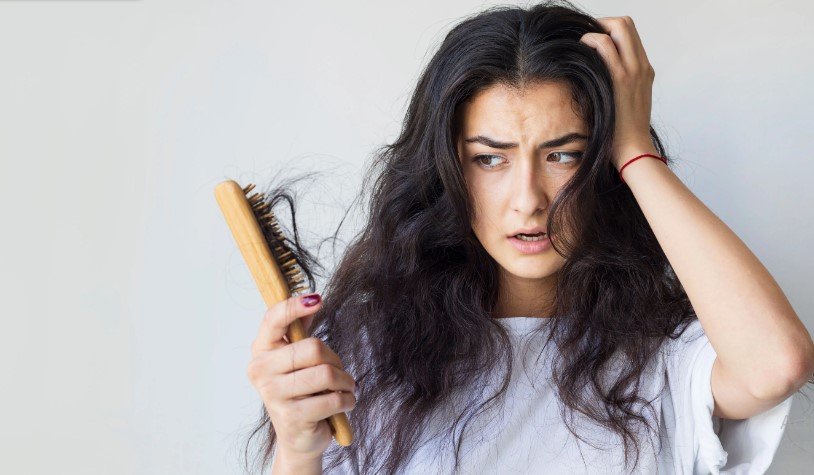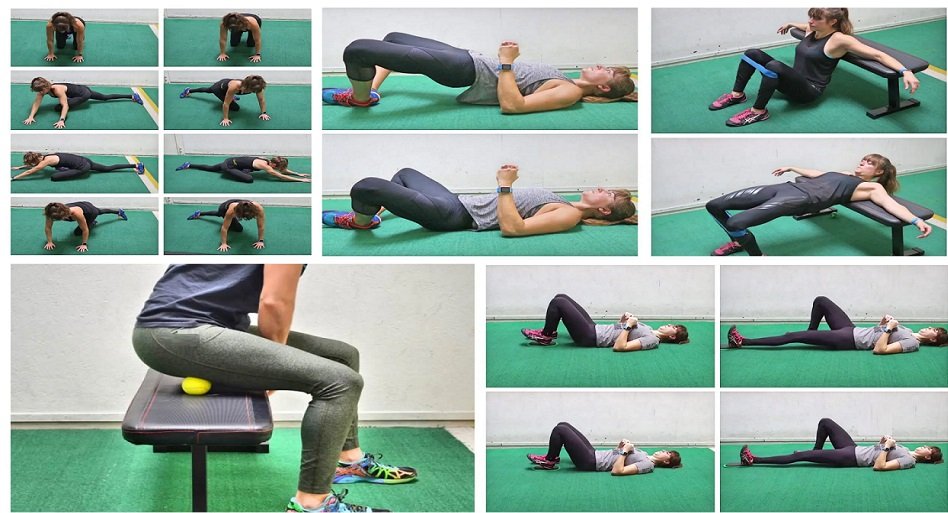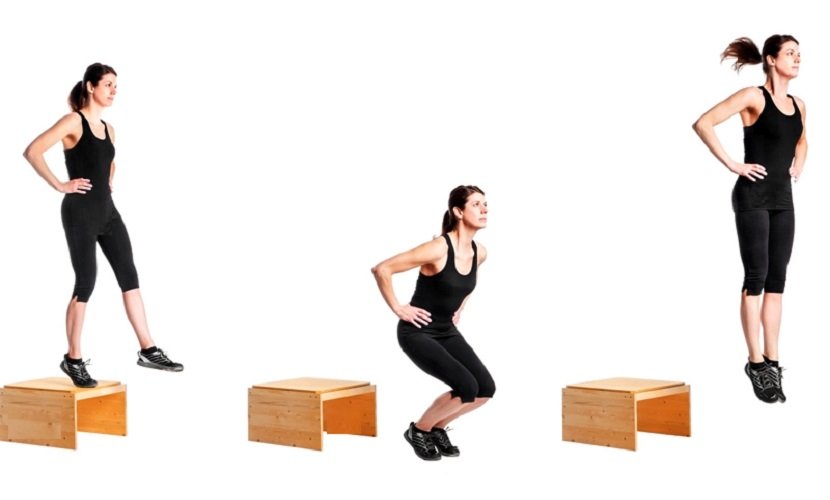Health And Fitness
How to Effectively Prevent Hair Fall
How to Effectively Prevent Hair Fall
Hair fall is a common concern that affects many people, often leading to distress and impacting self-confidence. By the time they reach 50, about 85% of men and 50% of women experience some degree of hair loss. It’s more than just a cosmetic issue—it can influence how we feel about ourselves and our overall well-being. Taking steps to address hair fall can boost self-esteem and contribute to your overall health. By understanding the causes and implementing preventive measures, you can help keep your hair healthy and strong.
Common Causes of Hair Fall
Genetic Factors
Genetics are a key factor when it comes to hair fall. If hair loss runs in your family, you’re more likely to experience it yourself. For instance, male pattern baldness, which affects about 95% of men with hair loss, is often inherited. Over time, this genetic predisposition can cause hair follicles to shrink, leading to thinner, shorter hair strands. Eventually, these follicles may stop producing new hair altogether.
Hormonal Changes
Hormonal changes can have a big impact on hair fall. Events like pregnancy, childbirth, and menopause often trigger hair loss, which can be either temporary or permanent. Thyroid issues can also contribute to hair thinning. These hormonal shifts disrupt the natural hair growth cycle, leading to more hair shedding than usual.
Nutritional Deficiencies
Nutritional deficiencies can take a toll on your hair, making it weaker and more prone to falling out. When your body is low on essential nutrients like iron, zinc, and vitamin D, your hair health can suffer. For example, low vitamin D levels have been linked to alopecia areata, a condition that causes patchy hair loss. Eating a balanced diet is key to supporting healthy hair growth, and if you’re lacking in certain nutrients, adding supplements might help.
Stress and Lifestyle
Stress plays a big role in hair loss, increasing the risk by up to 11 times. The stress hormone corticosterone directly affects hair follicles by extending their resting phase, which means less hair growth over time. When you’re stressed, your hair regeneration slows down, leading to more hair fall. Additionally, lifestyle factors like poor sleep and unhealthy habits can make the situation worse, contributing even further to hair loss.
Types of Hair Fall

image source:purplle
Androgenetic Alopecia
Androgenetic alopecia is the most common form of hair loss, affecting both men and women. It’s driven by a combination of genetics and hormones. With this condition, hair gradually starts to thin, usually beginning at the temples and crown. Over time, this thinning can lead to noticeable hair loss.
Telogen Effluvium
Telogen effluvium is a temporary condition that causes hair loss, often triggered by stress, illness, or hormonal changes. In this condition, hair enters the resting phase earlier than usual, leading to faster shedding. The good news is that once the underlying issue is resolved, hair growth usually returns to normal.
Alopecia Areata
Alopecia areata is an autoimmune disorder where the immune system mistakenly attacks hair follicles. This results in patchy hair loss on the scalp and other parts of the body. The severity of the condition can vary from person to person. Some people may see their hair grow back fully, while others might experience ongoing hair loss.
Effective Prevention Strategies

Image Source: unsplash
Dietary Changes
Essential Nutrients for Hair Health
What you eat is really important for keeping your hair healthy and preventing hair loss. Essential nutrients like iron, zinc, and vitamin D each play a special role. Iron helps deliver oxygen to your hair follicles, zinc supports the oil glands around them, and vitamin D encourages hair growth. If you’re not getting enough of these nutrients, it could lead to hair fall. So, adding foods rich in these vitamins and minerals to your daily diet can make a big difference for your hair.
Foods to Include in Your Diet
Hair Care Routine
Choosing the Right Products
Choosing the right hair care products is key to preventing hair fall. Opt for a mild shampoo that matches your hair type and steer clear of products with harsh chemicals that can cause damage. Conditioners should help nourish and moisturize your hair, so look for ones with natural ingredients. Using the right products regularly can make a big difference in keeping your hair healthy.
Proper Hair Washing Techniques
How you wash your hair can help prevent hair fall. Wet hair is more delicate and can break easily, so be gentle. Use your fingertips to massage your scalp rather than your nails or scrubbing hard. Make sure to rinse thoroughly to get rid of all shampoo and conditioner. After washing, gently pat your hair dry with a soft towel—avoid rough towel drying to prevent damage.
Avoiding Heat and Chemical Damage
Heat and chemical treatments can lead to hair fall, so it’s a good idea to limit the use of hot styling tools like blow dryers and flat irons. If you do use them, be sure to apply a heat protectant spray to shield your hair. Also, avoid tight hairstyles like buns and ponytails, as Dr. Angie Phipps, a hair restoration expert, points out that chronic pulling can cause permanent hair loss over time. By cutting back on heat and chemicals, you can help keep your hair strong and healthy.
Lifestyle Modifications
Stress Management Techniques
Importance of Regular Exercise
Adequate Sleep and Rest
Getting enough sleep is essential for both your overall health and hair growth. Not getting enough rest can raise stress levels and contribute to hair fall. Try to aim for 7-9 hours of quality sleep each night. Establish a calming bedtime routine to help improve your sleep quality, and make sure your sleeping environment is comfortable and quiet. Proper rest allows your body to regenerate and repair, which includes supporting healthy hair growth.
Additional Tips and Advice
Home Remedies for Hair Fall
Natural Oils and Treatments
Natural oils can be great for nourishing your scalp and strengthening your hair. Coconut oil, for example, deeply penetrates your hair and provides essential nutrients. Massaging it into your scalp can also boost blood circulation. Olive oil is rich in antioxidants that help protect your hair from damage; just apply it, leave it on for about 30 minutes, and then wash it out. Castor oil is another excellent option due to its high ricinoleic acid content, which promotes hair growth. Using castor oil as a weekly treatment can yield great results for your hair.
Herbal Supplements
When to Seek Professional Help
Signs of Severe Hair Fall
Noticing severe hair fall early on is key to addressing the issue promptly. If you’re experiencing excessive shedding, noticeable thinning, bald patches, or a receding hairline, it’s important to pay attention. If your hair is falling out in clumps, this could signal a more serious problem. In these cases, it’s a good idea to consult a professional to get to the root of the issue and find the right solution.
Available Medical Treatments
Medical treatments can be really effective for tackling hair fall. Minoxidil is a well-known over-the-counter option that many people find helps reduce hair loss and even encourages new hair growth. For instance, Christine saw full regrowth using the right ointments. Prescription medications like finasteride can also be helpful. It’s best to consult a dermatologist to explore personalized treatment options and find what works best for you.
FAQ: Top Ways to Prevent Hair Fall
What are the main causes of hair fall?
Hair fall can be caused by a variety of factors, including genetics (androgenic alopecia), stress, hormonal changes (e.g., during pregnancy or menopause), poor nutrition, medical conditions like thyroid disorders, certain medications, and hair care practices like excessive styling, chemical treatments, or heat damage.
How can I prevent hair fall naturally?
To prevent hair fall naturally, focus on a healthy diet rich in vitamins and minerals, especially biotin, zinc, iron, and vitamins A, C, D, and E. Regularly massaging the scalp with essential oils like rosemary or coconut oil can also help stimulate blood flow. Avoid tight hairstyles and harsh chemical treatments.
What foods are best for preventing hair fall?
Foods that promote healthy hair growth and help prevent hair fall include eggs (rich in biotin), leafy greens (iron and vitamin C), nuts and seeds (omega-3 fatty acids), fish like salmon (protein and omega-3s), and sweet potatoes (vitamin A). A balanced diet is key for maintaining hair health.
Are there any over-the-counter treatments for hair fall?
Yes, over-the-counter treatments such as minoxidil (Rogaine) are commonly used to treat hair fall and promote hair regrowth. Minoxidil is available as a topical solution or foam and is FDA-approved for both men and women. Be sure to follow the instructions carefully and consult with a doctor before use.
How can I reduce hair fall due to stress?
Reducing hair fall caused by stress involves managing stress through relaxation techniques such as yoga, meditation, regular exercise, and sufficient sleep. Practicing mindfulness and avoiding extreme stressors can improve overall health and reduce hair fall.
What role do hair care habits play in preventing hair fall?
Hair care habits play a significant role in preventing hair fall. Use mild shampoos and conditioners free of sulfates and parabens. Avoid frequent heat styling, tight hairstyles like ponytails or braids that can pull on the hair, and limit the use of chemical treatments like dyes and relaxers.
Is hair fall reversible, and how long does it take for hair to regrow?
Hair fall due to temporary factors like stress, poor diet, or illness can often be reversed with proper care, but it may take several months to see noticeable results. Hair regrowth typically occurs in cycles, so new hair may start to appear after 3-6 months of consistent treatment.
Can hormonal imbalances cause hair fall, and how can they be treated?
Yes, hormonal imbalances (e.g., during pregnancy, menopause, or due to conditions like PCOS) can cause hair fall. Treatment may involve addressing the underlying hormonal imbalance through medications like hormone replacement therapy, birth control, or thyroid regulation. Consulting with an endocrinologist or gynecologist is recommended.
Are there any professional treatments for hair fall?
Professional treatments for hair fall include options like PRP (Platelet-Rich Plasma) therapy, where the patient’s blood is used to stimulate hair growth, laser therapy, microneedling, and in severe cases, hair transplant surgery. These treatments should be done under the care of a dermatologist or hair specialist.
Can supplements help prevent hair fall?
Yes, supplements containing biotin, zinc, iron, and vitamins D and E can help prevent hair fall, especially if a deficiency is the cause. However, it’s important to consult a healthcare provider before taking supplements to ensure proper dosage and avoid potential side effects.
What should I do if I notice excessive hair fall?
If you notice excessive hair fall (losing more than 100 hairs per day or visible thinning), it is important to consult with a healthcare provider or dermatologist to determine the underlying cause and receive appropriate treatment. Early intervention can help prevent further loss.
Can certain medications cause hair fall?
Yes, certain medications, including chemotherapy drugs, antidepressants, blood thinners, and some blood pressure medications, can cause hair fall as a side effect. If hair loss is suspected to be medication-related, talk to your doctor about possible alternatives or solutions.
What types of shampoos and conditioners are best for preventing hair fall?
Shampoos and conditioners that are sulfate-free, paraben-free, and contain natural ingredients like keratin, biotin, or essential oils (e.g., rosemary, argan oil) are best for preventing hair fall. Avoid harsh chemicals, and look for products specifically designed for strengthening and volumizing hair.
Can frequent washing cause hair fall?
Frequent washing itself does not cause hair fall, but using harsh shampoos or washing with hot water can damage hair and scalp health, leading to breakage. It is best to use gentle, moisturizing products and avoid washing with very hot water.
What are the best practices for hair care after hair fall treatment?
After receiving hair fall treatment, maintain a consistent and gentle hair care routine, including using mild shampoos and conditioners, limiting heat styling, and ensuring a nutrient-rich diet. Regular scalp massages and avoiding stress can also promote healthy regrowth.
Health And Fitness
Walgreens Closing 1,200 Stores: A Major Shift in U.S. Retail Pharmacy

Walgreens has announced plans to close 1,200 stores across the U.S. by 2027 in an effort to optimize its operations. This decision comes after facing profitability challenges, increased competition, and market shifts. CEO Tim Wentworth cited underperforming locations and a difficult consumer environment as primary reasons for the closures. The company aims to focus on its core retail pharmacy business while cutting costs and improving long-term growth potential.
Why Is Walgreens Closing Stores?
Walgreens faces multiple challenges, including shrinking profit margins and decreased foot traffic. In response to inflation and lower consumer spending, the company is streamlining operations by targeting underperforming locations for closure. The ongoing shift to online pharmacies and the rise of competitors like CVS have also put pressure on Walgreens’ brick-and-mortar stores.
Impact on Customers and Communities
Many customers worry about losing access to convenient pharmacy services, especially in smaller communities. However, Walgreens aims to maintain robust service levels by focusing on profitable stores and enhancing its digital offerings. The closures could create opportunities for local pharmacies to fill the gap left by Walgreens in certain areas, though concerns remain about the broader impact on healthcare access.
What’s Next for Walgreens?
Walgreens is not just shutting stores but also revamping its business strategy. The company is reducing its stake in VillageMD and refocusing on pharmacy operations. Walgreens is not just closing stores; the company is also implementing a major shift in its business strategy. This includes reducing its stake in VillageMD and refocusing on its pharmacy operations.
The company will continue to offer retail health services, but with a leaner footprint and improved operational efficiency. As these changes unfold, consumers may see further shifts in how and where they receive pharmacy services. The company’s strategic shift is a response to a changing retail landscape and the need to adapt to changing consumer preferences. Walgreens is making a significant investment in its pharmacy operations to ensure that it can provide the best possible pharmacy care for its customers.
Most Searched Queries Regarding Walgreens Closures:
- “Why is Walgreens closing stores?”
- “List of Walgreens stores closing”
- “Impact of Walgreens closures on healthcare”
- “Alternatives to Walgreens pharmacy services”
Walgreens’ future will depend on how well it adapts to changing consumer preferences and a highly competitive retail landscape.
Financial Struggles & Reduced Profitability
Walgreens has been struggling with reduced profit margins due to inflation, higher shrink (inventory losses from theft and errors), and declining foot traffic. The ongoing changes in the retail pharmacy landscape have prompted Walgreens to reevaluate its operations and shutter underperforming stores. This decision is part of a larger effort to cut costs, streamline its footprint, and optimize the company’s future profitability.
The company is also seeking to improve its ability to compete with other retail pharmacies, such as CVS Health and Rite Aid. Walgreens is also looking to improve its ability to compete with online retailers like Amazon, which have been expanding their healthcare offerings. The decision is also part of a larger effort to cut costs, streamline its footprint, and optimize the company’s future profitability.
Impact on Stock Performance
Walgreens’ financial challenges have caused its shares to drop significantly—over 45% in the last year. In response, the company also lowered its profit forecast for fiscal year 2024 to between $2.80 and $2.95 per share, down from the previous estimate of $3.20 to $3.35 per share.
Customer Service Adjustments
Though the store closures will reduce Walgreens’ physical presence, the company plans to enhance its digital services. It is also reworking its health services, including retail health clinics and pharmacy services, to focus on high-performing regions. Walgreens is reducing its involvement in secondary ventures, like VillageMD, to realign with its core retail pharmacy business.
Workforce Reductions
As part of its cost-cutting strategy, Walgreens recently announced that it will be closing 1,200 stores by 2027. The company also revealed that it will be reducing its workforce, including layoffs across its corporate and retail divisions. While the exact number of job cuts has not been specified, the company has stated that it will be making the necessary changes to ensure its long-term success. This includes layoffs across its corporate and retail divisions, though the company has not specified the exact number of job cuts.
Questions from Consumers
- “How many Walgreens stores are closing?”
- “What will happen to Walgreens employees?”
- “Will Walgreens’ pharmacy services be affected by store closures?”
- “Are there alternatives to Walgreens in my area?”
The closures are part of Walgreens’ strategy to address the rapidly changing retail pharmacy market, ensuring long-term growth while navigating current economic challenges.
FAQs on Walgreens’ Store Closures
1. How many Walgreens stores are closing?
Walgreens plans to close around 1,200 stores by 2027, primarily focusing on underperforming locations.
2. Why is Walgreens closing stores?
Walgreens is closing stores due to declining profit margins, high operational costs, inflationary pressures, and competition from other pharmacies and online retailers.
3. Will pharmacy services be impacted?
While some stores will close, Walgreens intends to enhance its digital pharmacy services to maintain customer access to prescriptions.
4. What will happen to Walgreens employees?
Layoffs are expected as a result of these closures, but the company has not specified the total number of jobs affected.
5. How will this impact local communities?
Closures could lead to reduced access to pharmacy services in certain areas, particularly smaller communities, but Walgreens is working to consolidate operations to maintain essential services.
6. How do I find out if my local Walgreens is closing?
The company will release specific lists of store closures over time, so keep an eye on official announcements or check with your local store.
7. Are there alternatives to Walgreens?
Customers can explore other national chains like CVS, Rite Aid, or local pharmacies, depending on location and services offered.
Health And Fitness
How to Choose a Rehab for Lasting Recovery

Choosing the right rehabilitation center can be one of the most transformative decisions in your journey to sobriety. It’s more than just picking a place—it’s about finding the support system that will walk with you toward lasting recovery and a better quality of life. Did you know that 80% of patients report improved health after completing their programs? With the right rehab center, your chances of staying drug-free after treatment rise to as much as 95%.
The path to recovery is deeply personal, and the rehab center you choose can play a pivotal role in shaping your future. This decision can be the key to unlocking a healthier, happier life. You deserve the best care, so take the time to make an informed choice that will support your long-term success.
Identifying Personal Treatment Goals
Assessing Your Needs
Defining your personal treatment goals helps you focus on what truly matters in your recovery journey. What do you want to achieve? Is it maintaining sobriety, improving your mental health, or rebuilding relationships? By being clear about your goals, you can choose a rehab center that aligns with your vision for a better future.
It’s also important to understand the level of care you need. Some people may thrive in an intensive inpatient program, while others find success in outpatient care. Take a moment to honestly assess your situation. The right support can make all the difference, guiding you toward lasting recovery and a life full of possibility.
Consulting with Treatment Providers
Health And Fitness
Boost Muscle Power Workouts for Athletes

How to Boost Muscle Power: Top Workouts for Athletes
Muscle power is crucial for athletic performance, as athletes depend on generating power rather than solely focusing on maximum strength. Muscle Power Workouts for Athletes are designed to enhance power output, which is a key predictor of success in various sports and also aids in improving mobility among older adults. These workouts are essential for health and fitness, as they focus on exercises that increase explosive strength, tailoring muscles for specific sports. By engaging in these targeted training sessions, athletes can achieve peak performance.
Definition and Importance
What is Muscle Power?
Muscle power refers to the ability of muscles to exert force rapidly. This concept combines strength and speed to produce explosive movements. Athletes rely on muscle power to perform actions like jumping, sprinting, and throwing. The relationship between strength and speed defines muscle power. Training programs often focus on enhancing this attribute to improve athletic performance.
Why is it crucial for athletes?
Athletes benefit from increased muscle power in several ways. Enhanced muscle power contributes to better performance in sports-specific tasks. Activities such as sprinting, jumping, and changing direction quickly require high levels of muscle power. Greater muscle power also reduces the risk of injury by improving the body’s ability to handle dynamic movements. According to research, muscular strength and power significantly influence athletic performance, impacting speed, endurance, and resilience.
Factors Affecting Muscle Power
Muscle Fiber Types
Muscle fibers play a crucial role in determining muscle power. There are two main types of muscle fibers: Type I (slow-twitch) and Type II (fast-twitch). Fast-twitch fibers generate more power and are essential for explosive movements. Athletes with a higher proportion of fast-twitch fibers tend to excel in power-based activities. Training can enhance the efficiency of these fibers, leading to improved performance.
Neuromuscular Efficiency
Neuromuscular efficiency refers to the ability of the nervous system to communicate effectively with muscles. Efficient neuromuscular function allows for quicker and more powerful muscle contractions. Athletes can improve neuromuscular efficiency through specific training techniques. Exercises that emphasize speed and coordination help enhance this connection. Improved neuromuscular efficiency results in better force production and overall athletic performance.
Muscle Power Training for Beginners: Improve Flexibility and Mobility

Flexibility is a crucial component of physical fitness, but for many people, tightness and stiffness in the body can make stretching uncomfortable or intimidating. If you’re not very flexible, this 8-minute stretching routine is designed for you. It’s simple, requires no equipment, and addresses all the major muscle groups to help improve your mobility. Say goodbye to complicated yoga poses and advanced stretches—this is all about practical movements that will gently loosen up your muscles and joints.
1. Lumbar Rotation Stretch
This stretch targets the lower back and hips, two areas where many people experience tightness.
How to Do It:
- Lie on your back with your right knee bent.
- Use your left hand to grab the outside of your right knee and gently pull it over to your left side, allowing your body to twist.
- You should feel a stretch through your lower back and hip.
- Hold this position for 30 seconds.
Tip: Keep your movements slow and controlled, and only twist as far as is comfortable for your body.
2. Supine Hamstring Stretch
Hamstrings are often one of the tightest muscle groups, especially if you sit for long periods.
How to Do It:
- Lie on your back with your left leg straight.
- Cup both hands behind your right knee.
- Slowly straighten your right leg toward the ceiling until you feel a stretch in the back of your thigh (hamstring).
- Hold for 30 seconds, then switch legs.
Tip: Be sure not to force your leg straight; aim for a gentle stretch without pain.
3. Piriformis Stretch
The piriformis is a small muscle deep in the hip that can cause discomfort when tight. This stretch can relieve tension in the hips and lower back.
How to Do It:
- Cross your right leg over your left knee, forming a “figure four.”
- Grab your left knee and pull it toward your chest until you feel a stretch in your right hip.
- Hold for 30 seconds, then switch sides.
Tip: This is an excellent stretch for reducing tightness that contributes to sciatica or hip discomfort.
4. Tall Kneeling Hip Flexor Stretch
Your hip flexors can get tight from sitting too much, which can affect your posture and mobility. This stretch helps to lengthen those muscles.
How to Do It:
- Kneel on your right knee and take a large step forward with your left foot.
- Shift your weight forward, keeping your back straight, until you feel a stretch in the front of your right hip.
- Hold for 30 seconds, then switch sides.
Tip: Keep your torso upright and avoid arching your lower back.
5. Kneeling Hamstring Stretch
This is another great stretch for your hamstrings, but from a kneeling position.
How to Do It:
- From the tall kneeling position, shift your weight back onto your right knee.
- Straighten your left leg in front of you.
- Keep your back straight and lean forward from the hips until you feel a stretch in your left hamstring.
- Hold for 30 seconds, then switch sides.
Tip: Engage your core to avoid rounding your back during this stretch.
6. Seated Spine Rotation Stretch
Spinal mobility is essential for everyday movements like bending and twisting. This stretch helps to loosen up your mid and upper back.
How to Do It:
- Sit with your legs out in front of you.
- Cross your left leg over your right, planting your left foot flat on the floor.
- Twist your torso to the left, placing your right elbow on the outside of your left knee for leverage.
- Hold the stretch for 30 seconds, then switch sides.
Tip: This stretch may cause a few pops in your back, but that’s perfectly normal as long as there’s no pain.
7. Child’s Pose Stretch
The child’s pose is a classic yoga stretch that targets the entire back, especially the lats and spine.
How to Do It:
- Start on all fours (hands and knees).
- Sit your hips back toward your heels while reaching your arms forward.
- Tuck your chin into your chest and sink into the stretch, feeling the lengthening in your back.
- Hold for 30 seconds.
Tip: Breathe deeply and let your body relax into the stretch for maximum benefit.
8. Upper Back Extension
This movement opens up the chest and stretches the upper back, perfect for counteracting poor posture from sitting.
How to Do It:
- Sit or stand with your fingertips behind your head.
- Bring your elbows together and fold forward slightly.
- Then, lift your chest and elbows up, opening through your upper back and chest.
- Repeat this movement three times.
Tip: This dynamic stretch is excellent for improving posture and chest mobility.
9. Upper Traps Stretch
The trapezius muscles in the neck and upper back can get very tight, especially if you spend a lot of time hunched over a computer or phone.
How to Do It:
- Tilt your head to the left, bringing your left ear toward your left shoulder.
- Use your left hand to gently apply pressure to the right side of your head.
- Hold for 30 seconds, then switch sides.
Tip: Keep the stretch gentle—this is a sensitive area, and too much pressure can cause discomfort.
Plyometric Exercises

Box Jumps
Box jumps enhance explosive power. Athletes use box jumps to improve vertical leap and agility. The exercise involves jumping onto a raised platform. Box jumps require coordination and strength. Consistent practice increases muscle power and reduces injury risk.
Depth Jumps
Depth jumps focus on rapid force production. Athletes step off a box and immediately jump upon landing. This exercise trains muscles to react quickly. Depth jumps improve neuromuscular efficiency. Athletes gain better performance in sports requiring quick direction changes.
Olympic Weightlifting
Clean and Jerk
The clean and jerk builds total body power. Athletes lift a barbell from the ground to overhead. This movement combines strength and speed. The clean and jerk enhances muscle power and coordination. Regular training improves athletic performance in explosive sports.
Snatch
The snatch develops explosive strength. Athletes lift a barbell from the ground to overhead in one motion. This exercise requires precision and power. The snatch increases muscle power and flexibility. Athletes benefit from improved performance in dynamic sports activities.
Sprint Training
Short Distance Sprints
Short distance sprints boost speed and power. Athletes run at maximum effort for short distances. This training enhances fast-twitch muscle fibers. Short sprints improve acceleration and agility. Athletes gain an edge in sports demanding quick bursts of speed.
Hill Sprints
Hill sprints increase lower body strength. Athletes sprint uphill to build muscle power. This exercise challenges endurance and explosiveness. Hill sprints improve cardiovascular fitness and leg strength. Athletes experience enhanced performance in endurance-based sports.
Case Studies show that integrating these Muscle Power Workouts for Athletes leads to significant improvements. Research highlights the effectiveness of combining strength and ballistic-power training. Athletes achieve better results through targeted programs. These workouts reduce injuries and enhance overall performance.
Programming Ideas for Power Development
Periodization Techniques
Linear Periodization
Linear periodization involves a structured progression in training intensity. Athletes start with high-volume, low-intensity workouts. Over time, the focus shifts to low-volume, high-intensity sessions. This method enhances muscle power by gradually increasing the load on muscles. Research shows that linear periodization can lead to significant strength gains. Coaches often use this technique to prepare athletes for peak performance during competitions.
Undulating Periodization
Undulating periodization offers more variation in training. Athletes alternate between different intensities and volumes within a week. This approach prevents training plateaus and keeps workouts engaging. Studies indicate that undulating periodization can produce similar strength gains as linear models. Athletes benefit from the flexibility and adaptability of this method. Coaches can tailor programs to meet specific needs and goals.
Integrating Power Workouts into Training
Weekly Training Schedule
A well-structured weekly training schedule maximizes power development. Athletes should include a mix of strength, speed, and endurance sessions. Each week might feature two to three power-focused workouts. These sessions could involve plyometrics, Olympic lifts, or sprint drills. Rest days are crucial for recovery and muscle growth. Monitoring progress helps in adjusting the schedule for optimal results.
Balancing Power and Endurance
Balancing power and endurance is essential for comprehensive athletic performance. Athletes should incorporate both elements into their training regimen. Power workouts enhance explosive strength and speed. Endurance sessions build stamina and cardiovascular health. A balanced approach ensures athletes maintain peak performance across various sports demands. Coaches can design programs that integrate both aspects effectively.
-

 Health And Fitness6 months ago
Health And Fitness6 months agoPepsi Zero Sugar vs Diet Pepsi: Which Is Healthier?
-

 Health And Fitness5 months ago
Health And Fitness5 months agoHow to Choose a Rehab for Lasting Recovery
-

 News6 months ago
News6 months agoKolkata Doctor Case: Tragic Story of Dr. Moumita Debnath
-

 News6 months ago
News6 months agoLondon King Opens Up About Her Relationship with Rob Schneider
-

 News6 months ago
News6 months agoSunita Williams’ Space Dilemma: Never Alone, Always Brave
-

 Tech Innovation5 months ago
Tech Innovation5 months agoHuawei Mate XT: A Detailed Review of the World’s First Tri-Fold Smartphone
-

 Sports4 months ago
Sports4 months agoChicago Marathon 2024 Results
-

 Sports6 months ago
Sports6 months agoArshad Nadeem Winning Moments Javelin Throw Final Highlights


